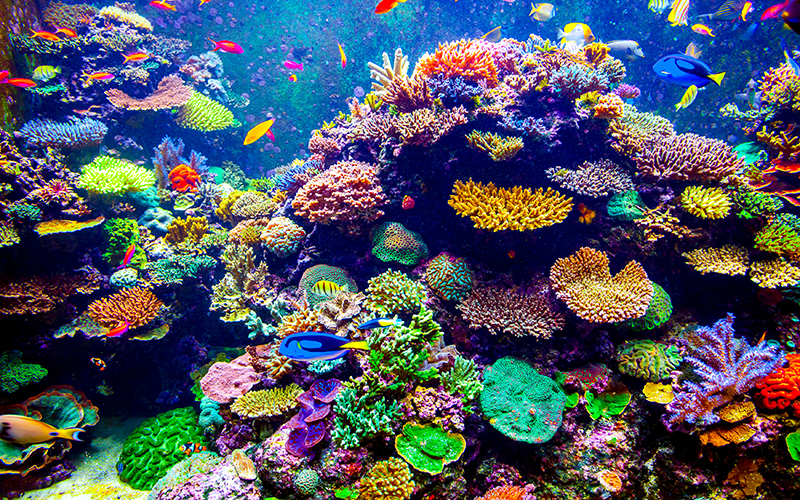Coral reefs in a ‘recovery window’
After a series of severe and widespread disturbances over the last decade, the Great Barrier Reef is in a recovery window, says new report from AIMS

The Great Barrier Reef is in a recovery window with coral cover rising in all three regions, according to a new report from the Australian Institute of Marine Science’s (AIMS). The report shows that after a year’s reprieve, with no major pressures from heat stress or cyclones, widespread coral recovery is underway.
Since 2009, the Great Barrier Reef has been hit hard with three mass coral bleaching events, the fourth crown-of-thorns starfish outbreaks and 17 cyclones that potentially exposed reefs to damaging waves. Hard coral cover dipped to a record low in all regions.
CEO of AIMS, Dr Paul Hardisty, said: “Coral reefs can recover from disturbances if given enough time and the reef has been given a breather over the last year. Another year like this will continue the reef’s recovery, but the increasing prominence of climate related extreme weather events and crown-of-thorns starfish outbreaks is causing more severe and frequent pressures, giving the reef fewer opportunities like this to recover.”
AIMS monitoring programme team leader, Dr Mike Emslie, said 127 reefs were surveyed in 2021, with 81 of those reefs previously surveyed in the last two years. Over this period, 69 of these reefs had increased in hard coral cover across the Northern, Central and Southern regions of the Great Barrier Reef.
Surveys showed much of the increase was driven by Acropora corals, known as table and branching corals, which are common to many parts of the Great Barrier Reef. “We found once these dominant corals re-established after disturbances, they hit a period of exponential growth which has led to the increases we see this year,” Emslie explained. “However, while they are fast to grow, they are often the first to go." He points out that: “Continued long-term monitoring to understand how the reef responds to disturbances is critical to its protection, along with a reduction in global emissions, and continued good environmental management.”
The Great Barrier Reef remains under continued pressure from climate change and needs help to survive into the future, Hardisty cautions: “The Reef has shown its ability to recover after disturbances before, but such resilience has limits.”
The full report can be found at: aims.gov.au
Image: shutterstock